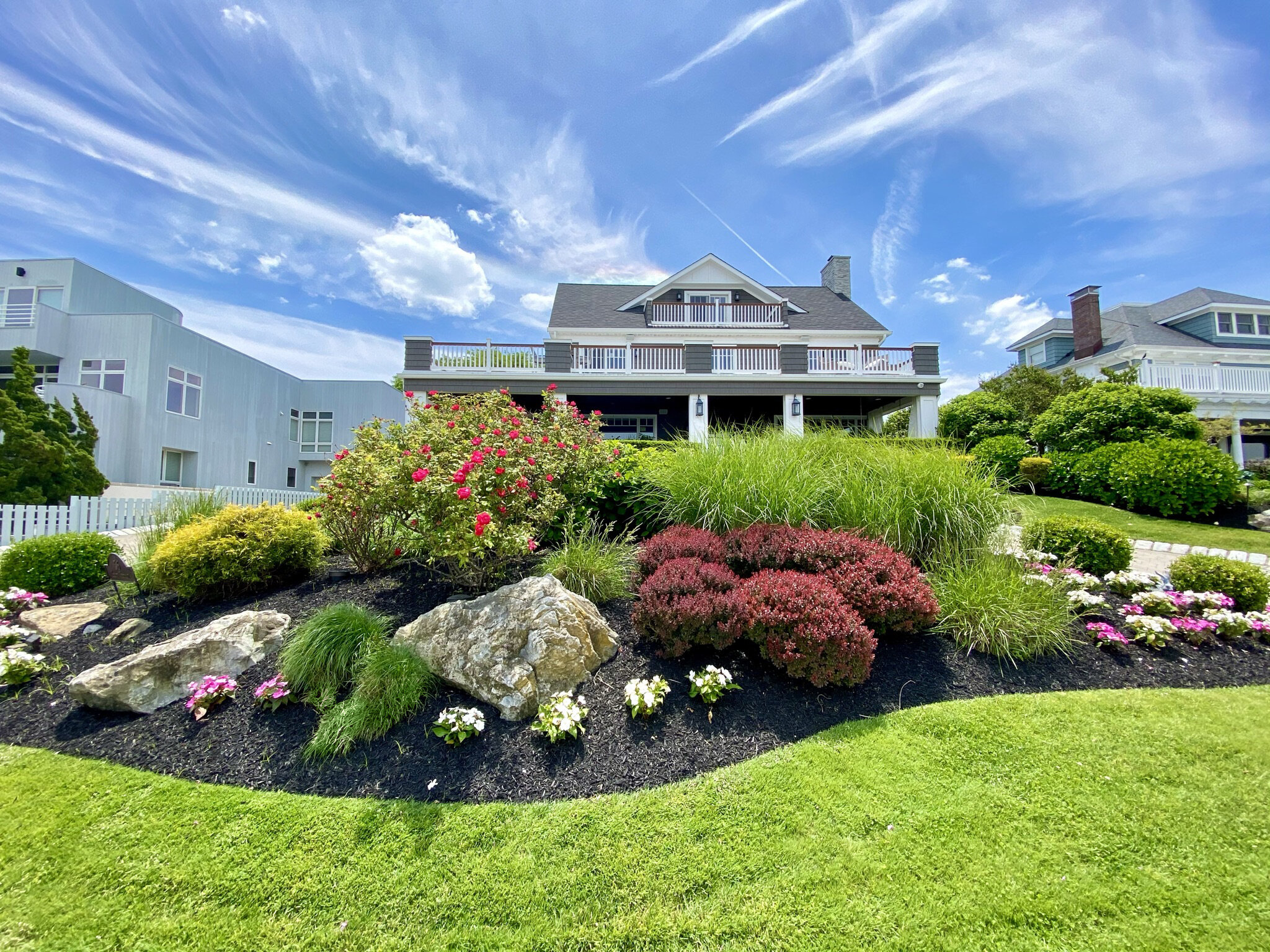Understanding the Different Strategies and Patterns in Modern Landscape Design for Your Outside Space
In today's swiftly developing landscape design sector, comprehending the varied methods and patterns can dramatically enhance your outdoor space. By discovering the advantages of native plants and reliable watering systems, one can produce an unified environment that is both useful and visually enticing.

Sustainable Landscaping Practices
Sustainable landscape design techniques mirror a growing recognition of the environmental impact of traditional landscape design techniques. These methods prioritize eco-friendly health while boosting the aesthetic worth of exterior rooms. By integrating techniques such as soil conservation, water administration, and natural horticulture, lasting landscaping intends to create an unified balance in between human task and nature.
One fundamental principle is using efficient watering systems, such as drip irrigation and rainwater harvesting, which decrease water waste. In addition, selecting environmentally friendly materials for hardscaping minimizes dependence on non-renewable resources. Composting natural waste and utilizing mulching techniques improves dirt wellness while reducing the requirement for chemical plant foods.
Furthermore, sustainable landscaping highlights the value of biodiversity. This can be accomplished through methods such as plant rotation and the implementation of pollinator gardens, which sustain local wild animals and improve environment strength. Ultimately, lasting landscaping not only addresses prompt ecological worries however likewise advertises long-lasting ecological sustainability. By embracing these techniques, home owners and landscape specialists can add to a much healthier earth while delighting in the benefits of magnificently made exterior areas.
Incorporating Indigenous Plants
Including indigenous plants right into landscaping styles is a critical method for improving ecological health and advertising sustainability. Native plants are adjusted to the neighborhood climate, dirt, and wildlife, making them more resilient and much easier to maintain than non-native types. This flexibility significantly minimizes the requirement for plant foods and pesticides, resulting in a much healthier environment.
Utilizing native plants also sustains neighborhood ecosystems by offering crucial environments and food sources for pollinators, birds, and various other wildlife. Additionally, they can successfully handle stormwater overflow, as their deep root systems assist to improve soil structure and boost water absorption. This, in turn, mitigates disintegration and reduces the danger of flooding.
When designing a landscape with indigenous plants, it is important to choose varieties that are ideal for the particular problems of the site, such as sun exposure, soil kind, and wetness levels. Organizing plants with comparable requirements not only promotes biodiversity yet likewise enhances the visual allure of the outdoor space. By focusing on indigenous plants, home owners and landscape developers can develop beautiful, practical, and eco liable landscapes that contribute favorably to the bordering environment.

Smart Modern Technology in Gardening
A growing number of homeowners and landscape experts are accepting smart technology in horticulture to improve efficiency and maximize plant care. Palm Desert Landscaping. This ingenious method incorporates sophisticated devices and systems designed to simplify horticulture jobs while guaranteeing much healthier plant growth
One of one of the most prominent smart innovations includes automated irrigation systems, which utilize sensors to check dirt wetness levels. These systems adjust watering schedules based on real-time information, protecting against over- or under-watering and preserving water resources. In addition, wise garden monitors track crucial specifications such as temperature, moisture, and light levels, providing beneficial understandings that assist garden enthusiasts make notified choices.
Furthermore, mobile applications now enable individuals to from another location control gardening devices, receive signals about plant health, and gain access to tailored treatment referrals. Gardeners can also leverage robotic grass mowers and weeding devices that operate autonomously, dramatically decreasing the moment and initiative needed for maintenance.
Outdoor Living Areas
As property owners significantly seek to expand their living rooms beyond the boundaries of their interiors, outside living areas have obtained substantial popularity. Palm Desert Landscaping. These spaces serve as flexible atmospheres for household, amusement, and leisure events, changing typical backyards into useful expansions of the home
Secret elements of exterior home typically consist of patio areas, decks, and exterior cooking areas. Materials such as natural stone, wood, and composite outdoor decking are often made use of to develop resilient and aesthetically attractive surfaces that endure the components. Furnishings like comfortable seats, eating tables, and fire pits improve the functionality of these locations, enabling property owners to enjoy their outside setups year-round.

Ultimately, exterior space show a desire for connection with nature, advertising a way of life that values relaxation, social interaction, and a much deeper gratitude for the outdoors.
Minimalist Style Trends
Highlighting simplicity and performance, minimalist layout fads have actually obtained traction in landscape design, matching the broader architectural activity in the direction of tidy lines and minimalist spaces. This technique prioritizes vital elements, decreasing distractions to develop calm and inviting outside environments. Trick functions of minimal landscaping include making use of minimal plant options, usually preferring indigenous species that call for much less maintenance and promote this sustainability.

Additionally, minimalist landscaping highlights open room, permitting unblocked sights and the seamless integration of exterior and interior living. Water attributes, this post if included, are typically structured and underrated, acting as tranquil prime focus without overwhelming the landscape.
Eventually, minimalist layout trends in landscaping cultivate an environment that motivates relaxation and mindfulness, making them a significantly prominent option for homeowners looking for to boost their outdoor spaces with sophistication and simpleness.
Verdict
Outside living areas, made with minimalist trends, promote relaxation and social interaction. Collectively, these methods not only boost the functionality of outdoor environments however also cultivate a harmonious relationship in between nature and contemporary living.
In today's swiftly evolving landscape layout sector, recognizing the varied strategies and patterns can substantially enhance your outdoor room. Grouping plants with similar needs not only promotes biodiversity but also enhances the visual charm of the exterior space.Trick parts of click here now outdoor living spaces commonly include patio areas, decks, and outdoor kitchen areas.Integrating landscaping functions such as gardens, water elements, and strategic lights can additionally boost outside living rooms. Exterior living areas, designed with minimal trends, advertise leisure and social interaction.